Abstract
Flocculation and removal of bacteria were observed during two separate aluminum sulfate (alum) treatments for removal of phosphorus from a eutrophic recreational lake. In addition, die-off and release of bacteria from alum floc were studied in columns under laboratory conditions. Membrane filtration and spread plates were used to determine concentrations of indicator species and total cultivatable bacteria, respectively. During the alum treatment of the lake, 90% of the fecal coliform (FC) population and ca. 70% of the fecal streptococci population were removed from the water column within 72 h. Numbers of FC in the floc on the lake bottom exceeded 2,400/100 ml at 120 h compared with the pretreatment concentration of 30 FC/100 ml. Inactivation of FC in the floc proceeded at a rate of 200 FC/100 ml per 24 h. In a second alum application to the lake, 95% of the total culturable bacterial population was removed from the water column. In a laboratory column study of survival and release rates, over 90% of an Escherichia coli suspension was concentrated in a floc formed at the bottom. E. coli was not released from the floc. The numbers of and survival of E. coli in the floc suggest the probable concentration of other enteric organisms, including pathogens. Thus, the floc poses a potential human health risk if ingested by swimmers or if others use the lake as a potable water source.
Full text
PDF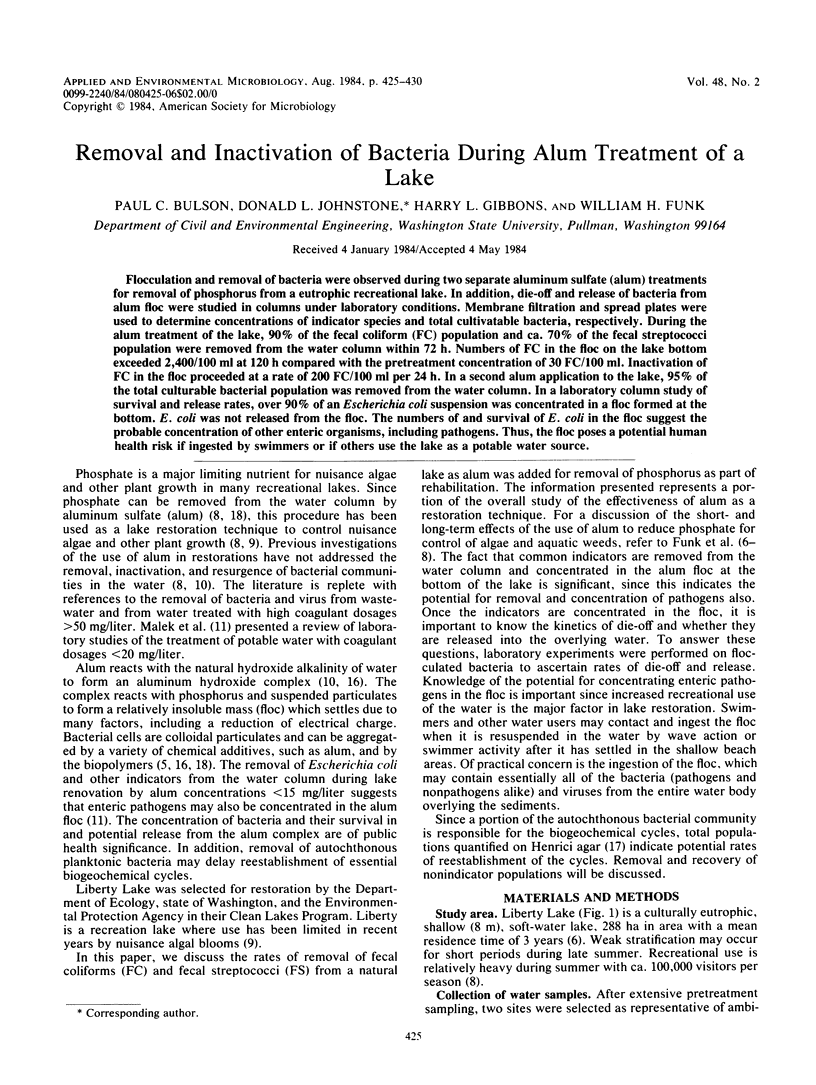
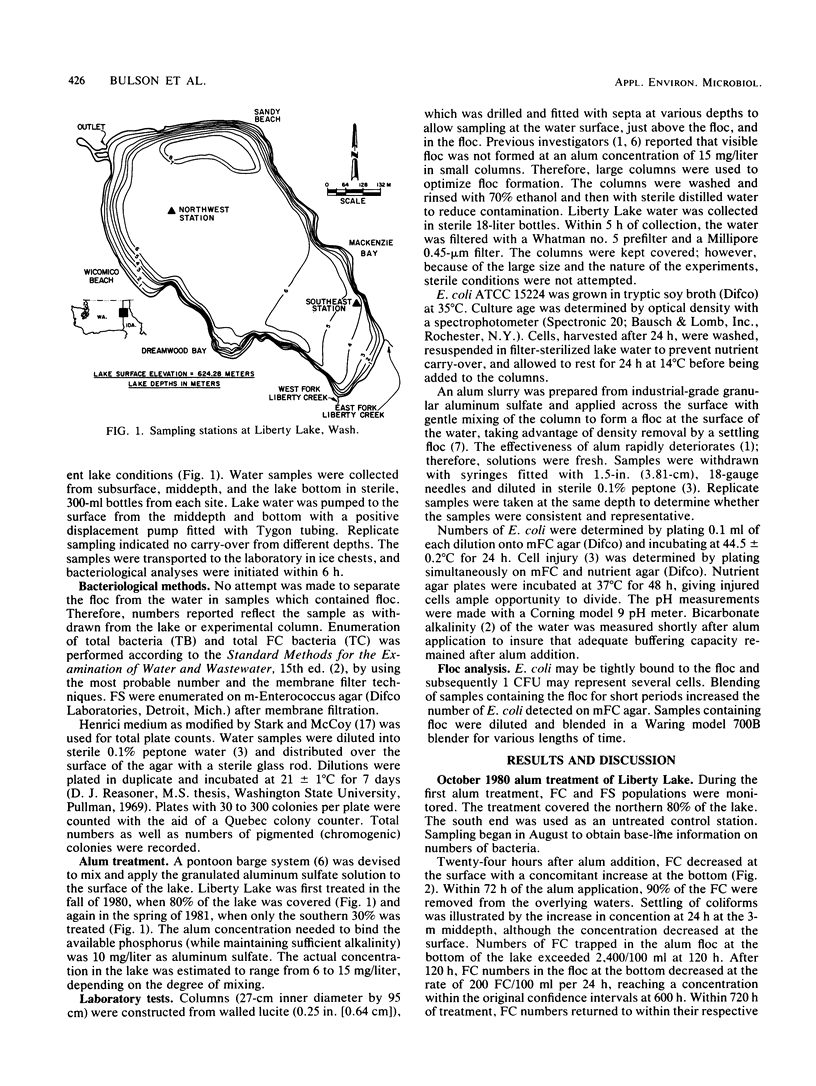
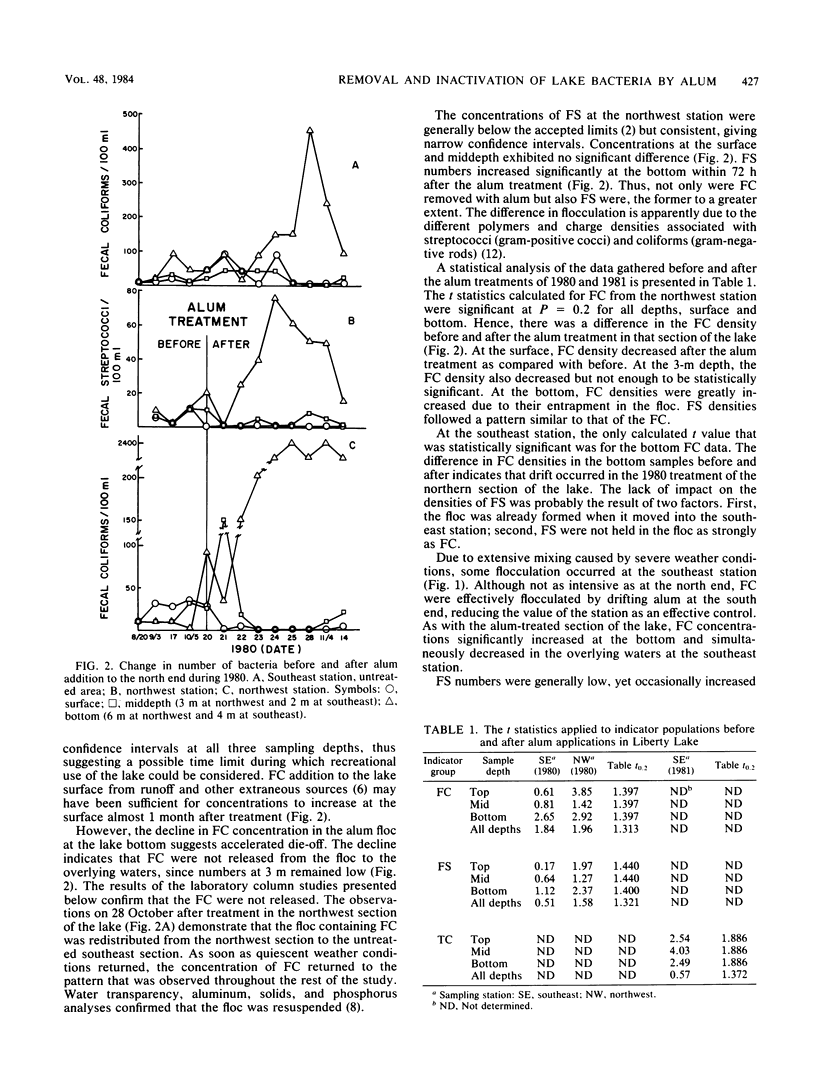
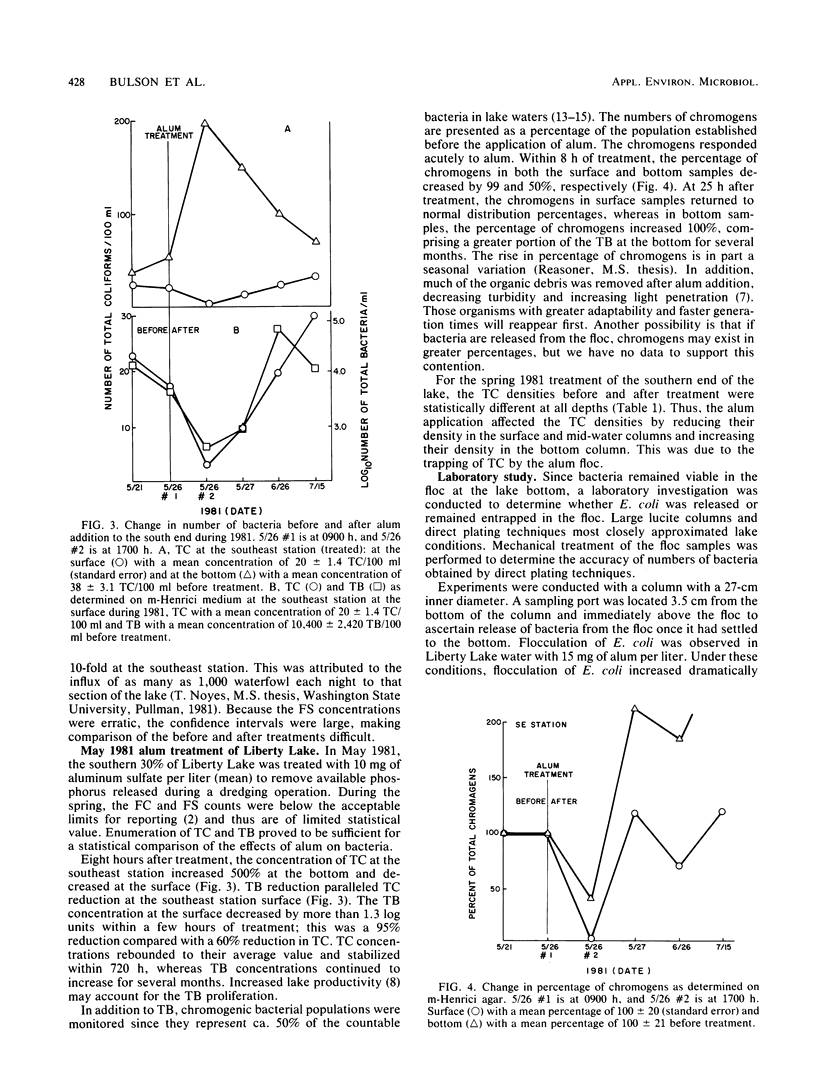
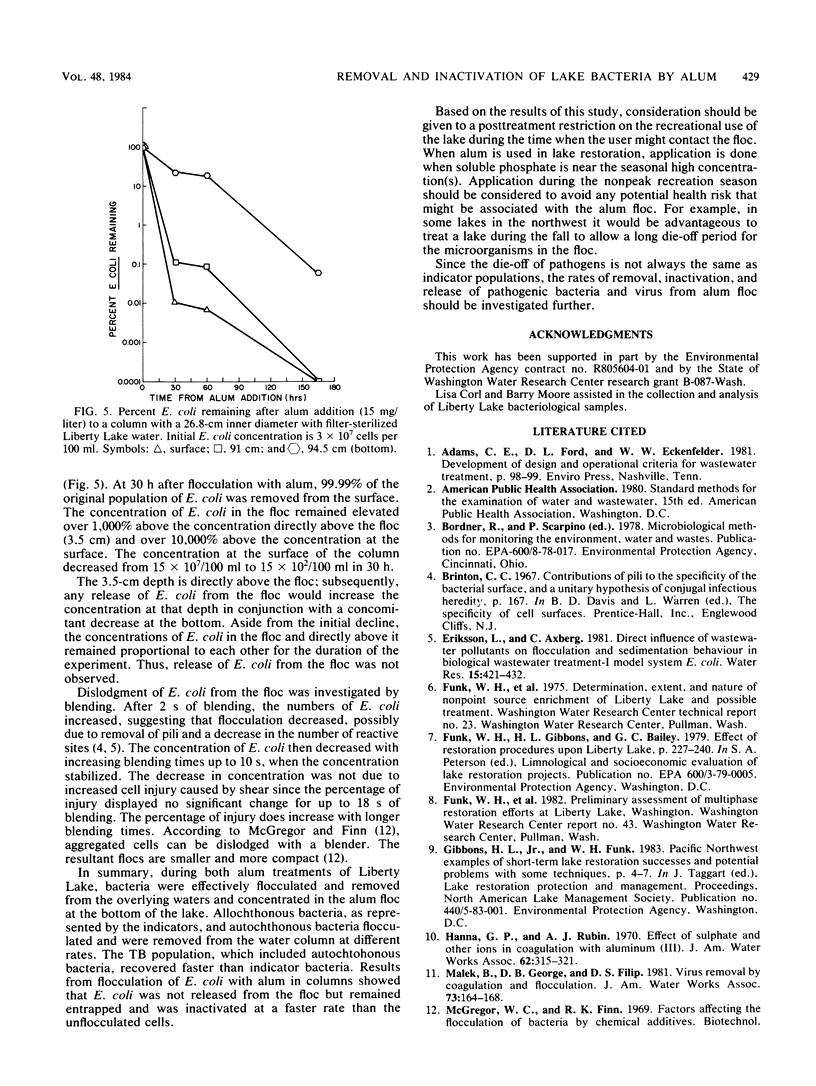

Selected References
These references are in PubMed. This may not be the complete list of references from this article.
- Tenney M. W., Stumm W. Chemical flocculation of microorganisms in biological waste treatment. J Water Pollut Control Fed. 1965 Oct;37(10):1370–1388. [PubMed] [Google Scholar]


